Every fly fisher that takes the leap and opts, voluntarily, to start slinging flies at carp eventually arrives at a moment of clarity. The garbage fish that have found their way into nearly every drainage ditch, irrigation canal and city settling pond in the country over the last 190 years becomes less onerous, more appreciated … even valued.
Then, at some point, that new-found clarity evolves a bit more. Maybe it’s the brutish strength that carp exhibit when all the fly-fishing trigonometry involved in casting to carp finally ends in a hookup. The reel-screaming runs. The sight of the backing knot slipping uncontrollably out of the tip-top guide. That moment when questions are more numerous than answers.
“Did I tie that knot right?”
“Is this 7-weight stout enough?”
“Isn’t this thing tired yet?”
It all contributes to something deeper. Eventually, the relationship between angler and carp becomes quite intimate, not unlike the connection many experience over decades of chasing trout in clear-running streams.
For carp, it happens when the sun hits the bronze scales just right, and the clean lines and the purposeful proportions between its thick body and substantial fin structure all translate into piscine perfection. It’s when its jet-black eyeball glares right back, almost defiantly. When it’s marble-hard gill plates continue to pulse, finding oxygen in every vapor of water. This is when every serious carp fisher arrives at angling effulgence. Then, and only then, can an angler truly admit the admiration they most certainly feel for this storied species.
Carp are beautiful.
And some are more beautiful than others.
In southern Idaho’s Snake River, common carp share the green waters with their genetic twins, mirror carp. They share the same habitat, the same food and, very likely, they spawn with each other, which is likely how mirror carp continue to persist. A common carp, with it’s perfectly proportionate scale structure, is perhaps the most adaptable fish on earth. The mirror carp is likely everything the common carp is, only with a random scale pattern that makes these fish a bit unusual, almost striking.
And this was no accident.
In the 12th century, Cistercian (or Trappist) monks in western Europe managed, over time, to breed mirror carp into existence. The monks weren’t allowed to eat meat, but they could still eat fish, and did with great vigor. But, as with any source of protein, fish grew sparse in the wild, so the monks in places like Germany’s Maulbronn Monastery began farming fish. They raised eel, pike and carp, among other lesser species.
But, given the state of dental care in the 1100s, and the fact that nearly every piece of every fish was consumed in some fashion or another, something had to be done about the carp’s scale armor. So, by selectively breeding some carp with naturally occuring “bald spots” -- places on a fish’s body where scales were missing -- the monks were able to “craft” carp with fewer scales. Mirror carp were prized for their table value, and once propagated, they became quite popular.
Over centuries, mirror carp were transported around the world, certainly for their sporting value, but largely for their value as a food fish. When they arrived in the United States is anybody’s guess, but their genetic equal, the common carp, was first stocked in the U.S. in 1831 during the Industrial Revolution, to feed a burgeoning nation.
Since that day, common carp have turned up in nearly every American state, and, contrary to their lofty status when they first arrived, they are not nearly as appreciated today (carp do have a cult following, but they are largely held in disregard among American anglers). In truth, carp are hell on native ecosystems, bending nature to their will and changing waterscapes, often for the worse, forever. Eradicating carp from American waters would require an effort that would make a moonshot look like child’s play.
Mirror carp in the U.S. may persist merely as a genetic anomaly, but in rivers like the Snake, they’re quite common, which indicates that, for some reason, they keep turning up at a sustainable clip. It stands to reason that if more mirror carp survive to spawn, the gene that depicts scale structure will be passed on during the mating process.
But that doesn’t always happen. According to the Journal, “Science,” mirror carp that were transplanted to Madagascar in 1912 (as a source of food, of course) have, in just over 100 years regained their common-carp scales. According to a study by the Royal Society, the reappearance of scales on wild carp in Madagascar is likely the result of a very rapid “evolution” in response to environmental demands. Carp scales are substantial, and certainly provide protection for the fish in the wild. Fish without scales, or with fewer scales, were likely “thinned from herd,” so to speak, by predators, while those with more scales (even mirror carp have some scales--some are larger, some are smaller) survived and continued to spawn. This rapid evolution occured in only 40 generations of carp, a very rare Darwinian feat.
Regardless of appearance, for the fly fisher, the game is the same. Mirror carp don’t fight any less hard. They can be just as finicky and spooky as their common carp siblings. And, in places like the Snake, they’re either reviled or revered, depending on the angler and whether her or she has arrived at that fateful moment when, upon lifting the beast from the drink, they determine that what they’re holding is, indeed, a stunning fish worthy of their respect.
Still on the fence? Consider this. The same Trappist monks that farmed carp and found a way, nearly 1,000 years ago, to “create” a better carp, also are credited with brewing some of the best beer on the planet. Trappist ale is among the most-prized ales in the world, and only 14 breweries around the world are certified to craft it. Like the mirror carp, the beer has found its way to most corners of the globe, where it is very much appreciated by beer drinkers. Trappist beers come in a number styles, strengths and varieties (but must all be brewed in a Trappist monastery).
I get that it’s a far-fetched theory that if Trappist monks know their beer, they must know their fish, too. But taste is taste, right? And carp weren’t always considered with upturned noses. Elsewhere in the world, particularly by bait anglers, carp are deeply prized (just like Trappist beer), and they have been for centuries. Izaak Walton even once described the carp as “the queen of rivers” for its angling bona fides.
And, in the Snake River, the mirror carp, built by Godly men, might be the queen of queens.


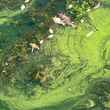
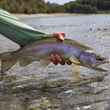
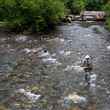






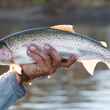
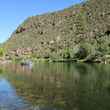

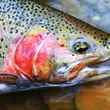





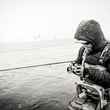
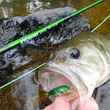
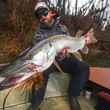

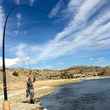



Comments